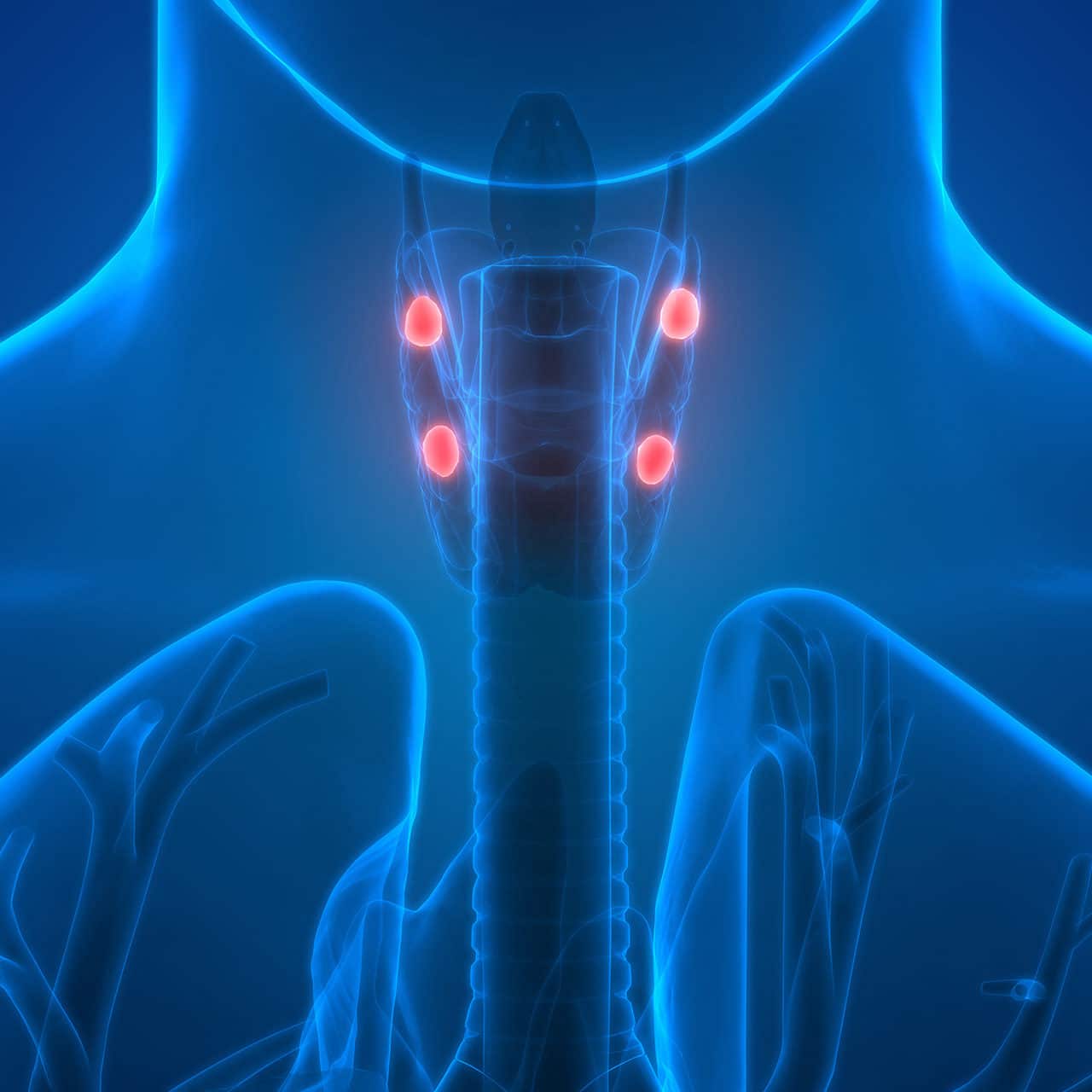What is a Parathyroid Adenoma?

A parathyroid adenoma is a benign tumor involving one of the parathyroid glands. There are four parathyroid glands and these are located on the back of the thyroid gland in your neck. The function of the parathyroid glands is to produce a hormone called parathyroid hormone (PTH), which regulates the level of calcium in your blood.
A parathyroid adenoma causes the affected gland to produce too much PTH, which results in an elevated calcium level in your blood.
What Are the Symptoms of Parathyroid Adenoma?
Usually a parathyroid adenoma does not cause any symptoms and is diagnosed when an elevated calcium level is discovered on routine blood tests. The elevated calcium is caused by the excess parathyroid hormone being produces by the adenoma, resulting in hyperparathyroidism. Elevated calcium level in your blood can result in joint and bone pain, kidney stones, abdominal pain, nausea, vomiting, constipation, muscle pain, fatigue, depression, confusion, and decreased ability to concentrate. Untreated, elevated calcium in your blood can lead to bone fractures and osteoporosis.
What Causes a Parathyroid Adenoma?
The cause of a parathyroid adenoma is commonly unknown. Some people are genetically predisposed to developing parathyroid adenomas.
How is a Parathyroid Adenoma Diagnosed?
If you are found to have an elevated level of calcium in your blood, your doctor will order additional blood tests to check the level of PTH in your blood and may also perform additional tests to rule out other causes of elevated calcium. To determine if an adenoma is present, your doctor will order an imaging study which can be in the form of an ultrasound of the neck, sestamibi scan, MRI, or CT.
How is a Parathyroid Adenoma Treated?
The most common treatment for parathyroid adenoma is surgical removal, which is called a parathyroidectomy. Surgical removal of the affected gland(s) is the only permanent, curative treatment for primary hyperparathyroidism. During this surgery, anywhere from one to all four of the glands are removed under general anesthesia. This is performed through a small incision in the neck. Your PTH level is monitored during the surgery to ensure removal of the adenoma as the PTH level decreases rapidly when the adenoma is removed.
Non-surgical treatment can be chosen for select patients without symptoms. However, long-term monitoring in the form of blood tests and bone mineral density testing is necessary.
A parathyroid adenoma causes the affected gland to produce too much PTH, which results in an elevated calcium level in your blood.
Call San Diego ENT at (858) 926-7010 for more information or to schedule an appointment.
